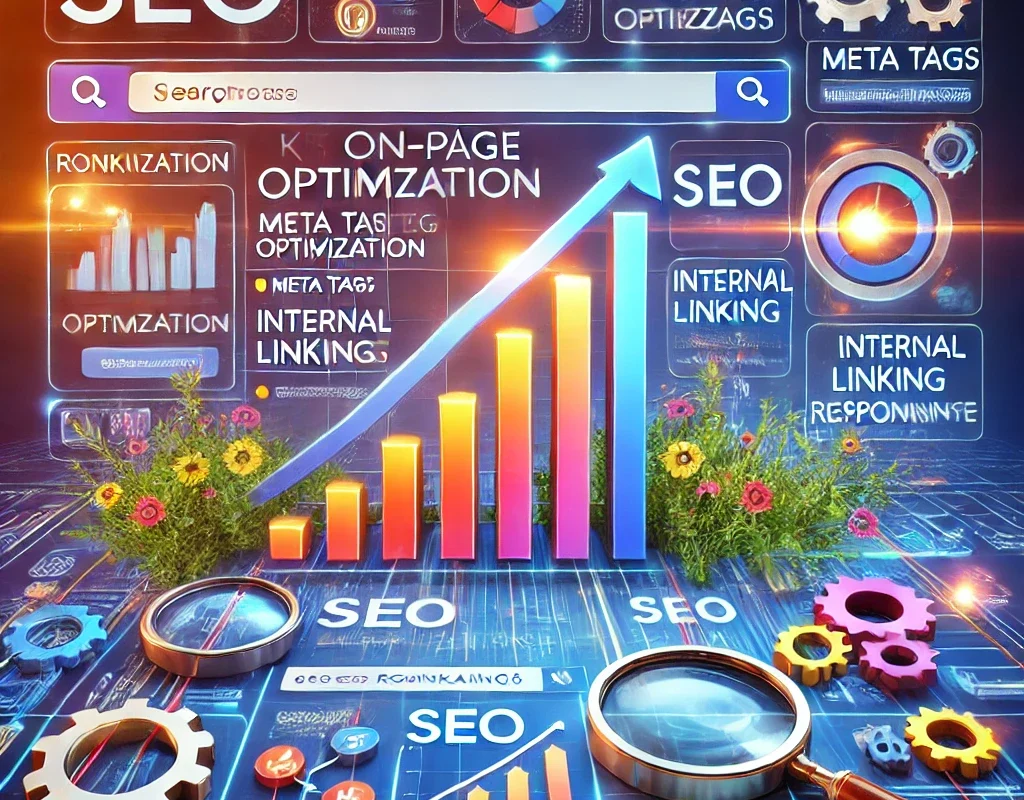In today’s digital landscape, mastering the art of search engine optimization (SEO) is crucial for any business looking to thrive online. Among the vast array of SEO techniques, on-page optimization remains one of the most important and foundational strategies to improve your SEO rankings. When executed effectively, it helps drive organic traffic, improve visibility, and enhance user experience (UX). But, how do you optimize your site in a way that actually makes a difference?
On-page optimization refers to the process of optimizing individual web pages to rank higher and earn more relevant traffic in search engines. Unlike off-page SEO that focuses on external factors like backlinks, on-page optimization is all about tweaking the content, HTML code, and structure of your site. In this article, we’ll explore how you can boost your SEO rankings using effective on-page optimization techniques.
How to Improve Your SEO Rankings with On-Page Optimization
In today’s SEO environment, on-page optimization is critical for long-term success. This involves optimizing various elements on your website, from content to technical aspects, to align with search engine requirements. With competition growing in every industry, simply producing content is no longer enough. You must focus on making that content discoverable and relevant for both users and search engines.
The beauty of on-page optimization is that it allows you to have complete control over how your website communicates with search engines. These strategies are not only beneficial for ranking on Google but also for creating a smoother user experience.
Understanding On-Page SEO Elements
When we talk about on-page SEO, we’re referring to various elements on your website that can be optimized to improve your search ranking. These include keyword optimization, meta tags, headers, internal linking, and even image alt texts. Optimizing these elements helps search engines better understand your content and rank it accordingly.
Key Elements of On-Page SEO:
- Content: Quality, relevance, and format are critical to on-page SEO.
- HTML Tags: Meta descriptions, title tags, and header tags should be carefully optimized.
- Internal Links: Linking to other relevant pages on your site boosts SEO.
- URL Structure: Short, descriptive URLs are more SEO-friendly.
- Images: Image alt texts and file names should include target keywords.
- Mobile-Friendliness: Ensuring your site is mobile-optimized is a major SEO factor.
- Page Speed: Faster page load times contribute significantly to better rankings.
By focusing on these elements, you ensure that your website is both search-engine-friendly and user-friendly.
The Role of Keywords in SEO
Keywords are still the foundation of any on-page optimization strategy. Without the right keywords, search engines may struggle to understand your content. Therefore, finding the best keywords through thorough research is an essential first step.
How to Optimize Keywords for Maximum Impact
To effectively optimize keywords, begin by identifying relevant phrases that your audience searches for. Use tools like Google Keyword Planner or Ahrefs to uncover high-volume keywords with manageable competition. Incorporate these keywords naturally within your content—especially in headings, meta descriptions, and the first 100 words of your text.
But don’t overdo it! Over-optimization or keyword stuffing can hurt your rankings. Focus on creating meaningful, relevant content while subtly weaving in your target keywords. Remember, search engines reward content that provides value to users, not content that tries to manipulate algorithms.
Crafting SEO-Friendly Titles
One of the most significant on-page SEO factors is the title tag. Title tags appear as clickable headlines in search results and play a pivotal role in telling both search engines and users what your page is about.
Best Practices for Writing Effective Page Titles
- Include your primary keyword: Ensure that your target keyword appears early in your title.
- Keep it concise: Google typically displays the first 50-60 characters, so stay within this limit.
- Be descriptive: Titles should provide a clear idea of what users can expect from the page.
- Use power words: Words like “ultimate,” “guide,” and “best” can entice clicks and improve CTR (Click-Through Rate).
The title tag is often the first thing people notice about your content, so make it count.
Meta Descriptions and Their Impact
Meta descriptions are brief snippets that summarize the content of a page and appear beneath the title in search engine results. While meta descriptions are not a direct ranking factor, they can significantly impact your click-through rate, which in turn affects your SEO.
How to Optimize Meta Descriptions for Better Clicks
A well-crafted meta description should include the following elements:
- Primary keyword: Including the main keyword helps search engines and users understand the page’s relevance.
- Enticing call to action (CTA): Phrases like “learn more,” “find out how,” or “get started” can motivate users to click.
- Match the content: Make sure the meta description reflects the actual content on your page to avoid high bounce rates.
- Limit the length: Keep it under 160 characters to ensure the full description is visible on search results.
Well-optimized meta descriptions help improve CTR and draw more traffic to your site.
Header Tags and Their Significance
Header tags (H1, H2, H3, etc.) structure your content for both search engines and users. They signal the hierarchy of your content, making it easier for search engines to crawl and index the page. Proper use of header tags also enhances the readability of your content, providing a clear layout for users to follow.
Structuring Your Content with Header Tags
- H1 Tag: This is the main heading and should include your primary keyword.
- H2 Tags: These should be used for subheadings, breaking down your content into digestible sections.
- H3, H4 Tags: Use these for further sub-sections, especially if your content is extensive.
Properly structured content makes it more readable and helps search engines better understand the context of your page.
Improving Content Quality
No matter how well you optimize for search engines, the quality of your content is non-negotiable. High-quality content earns backlinks, keeps visitors engaged, and encourages social shares—all of which contribute to better SEO rankings.
You Can Also Read : How to Create a Crisis Management Strategy for Your Business
How High-Quality Content Improves SEO
Search engines, particularly Google, are becoming increasingly sophisticated at recognizing quality content. This means:
- Depth and expertise: In-depth, authoritative content ranks better than superficial articles.
- User engagement: Well-written, engaging content keeps users on the page longer, reducing bounce rates.
- Keyword relevance: Natural, relevant keyword usage helps search engines match your page to user queries.
Invest time in creating valuable, insightful, and up-to-date content that addresses user needs, and you’ll see improvements in both rankings and user satisfaction.



